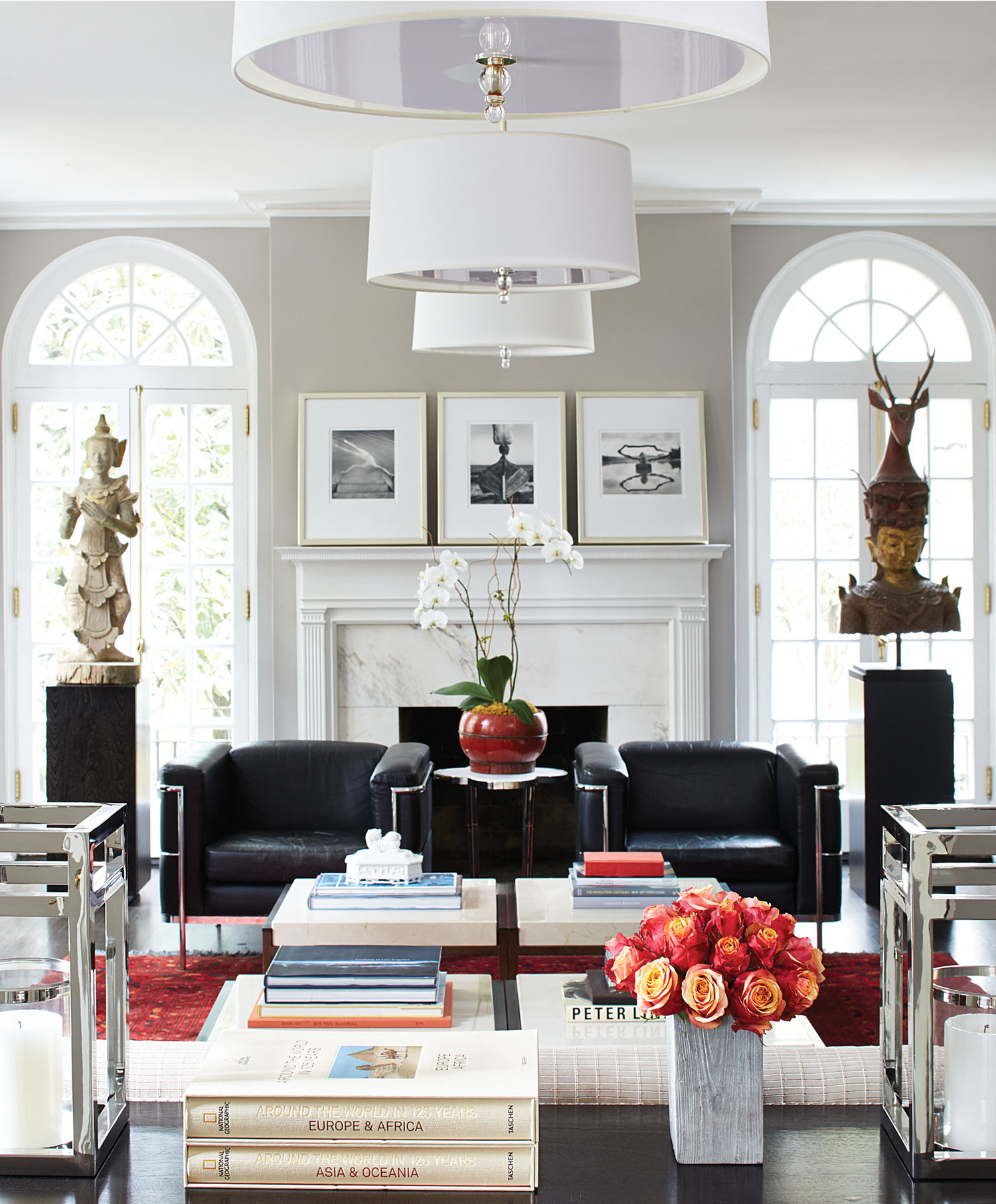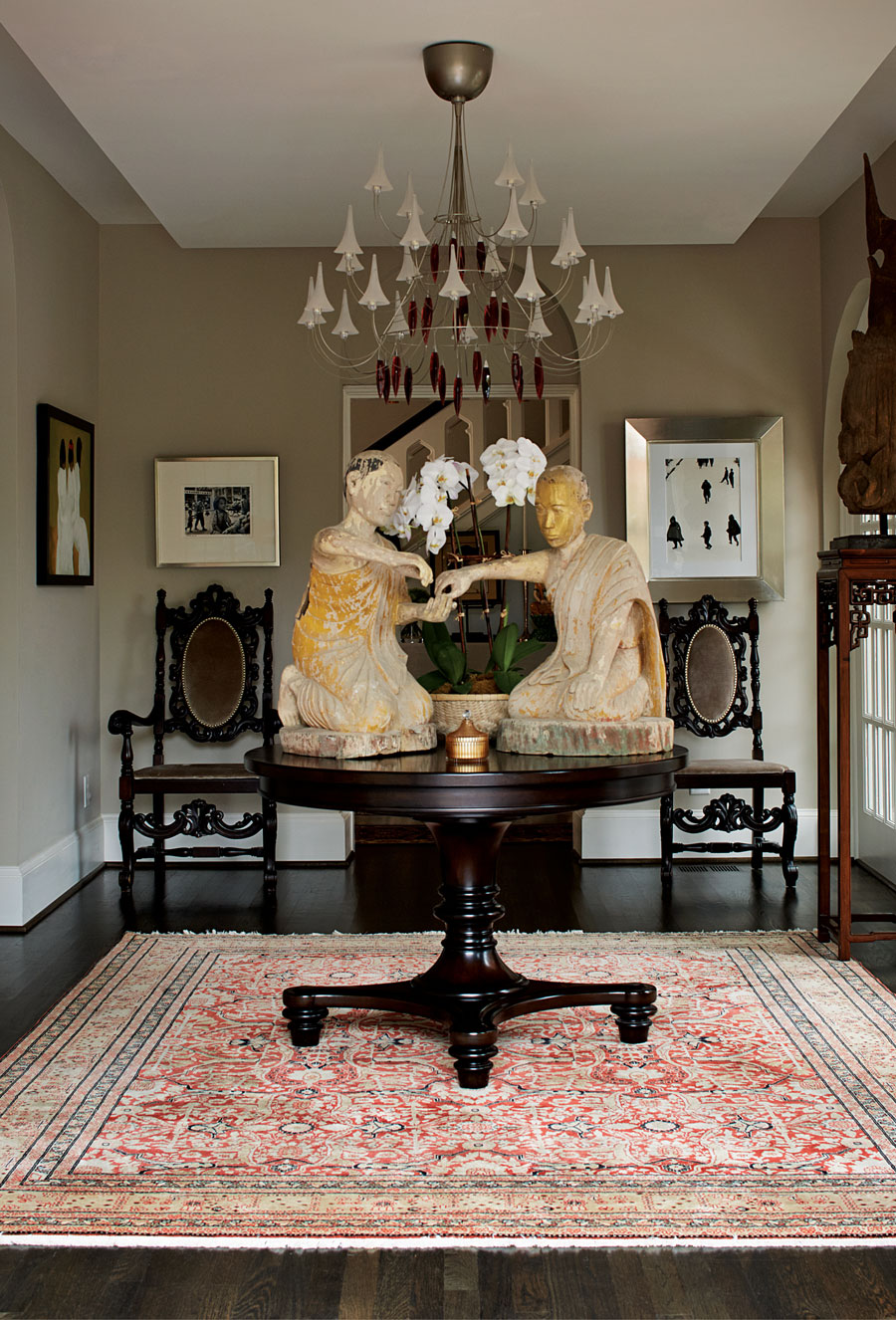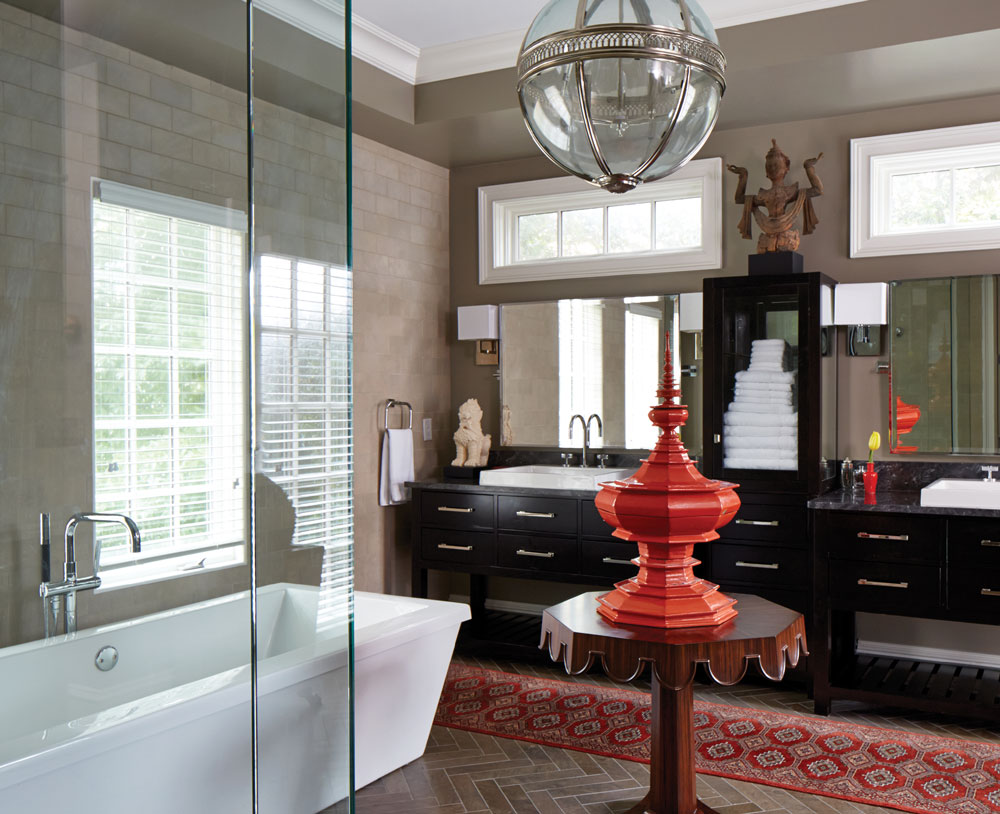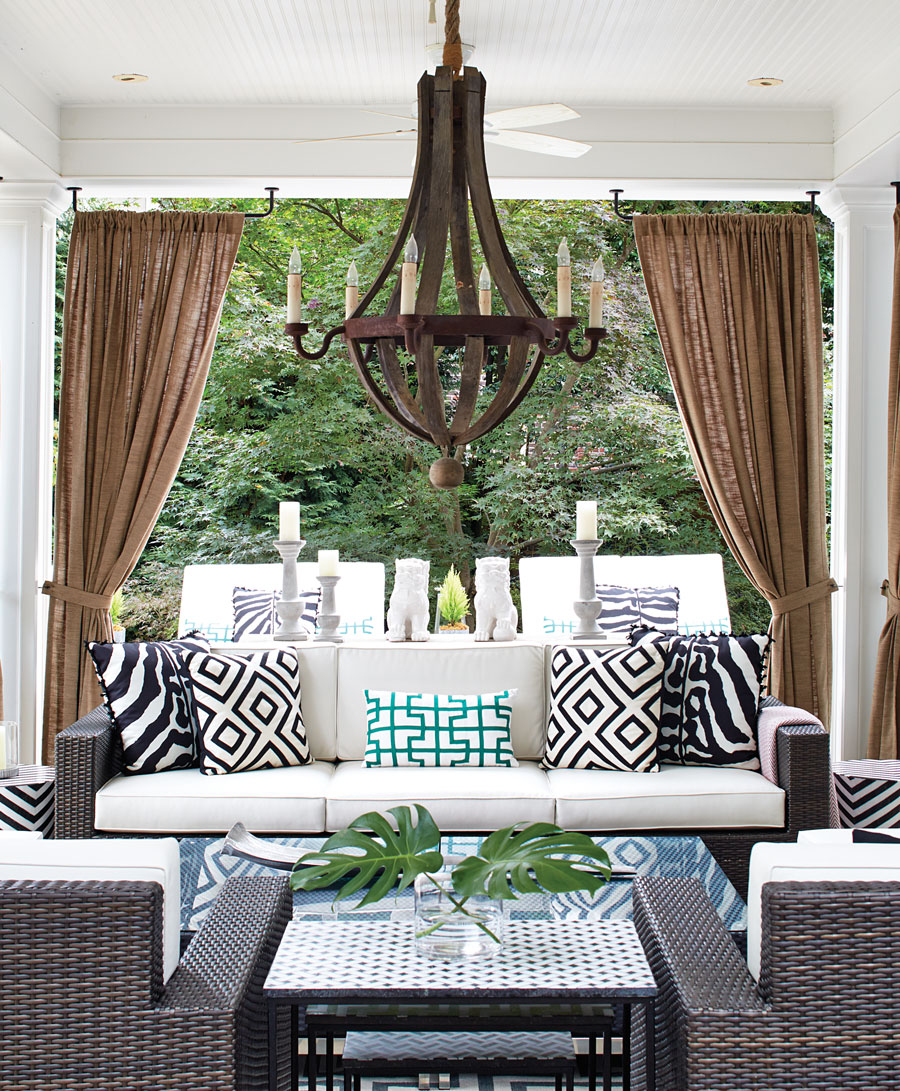
Photograph by Lauren Rubinstein
Never one to be intimidated by overseas shipping, Vern Yip has a one-ton marble bathtub in his backyard to prove it. He and his husband, Craig Koch, spotted the antique tub decorated with elephant carvings in Udaipur, India. “Too bad we can’t take it home,” said Craig, knowing Vern’s affinity for the animal rich with Eastern religious symbolism. “Why not?” replied Vern.
As a UNICEF Ambassador, HGTV star, Washington Post columnist, and product designer, the peripatetic entrepreneur frequently brings along an empty suitcase (or two) for treasures discovered on the go. “This entire house is a reflection of our journey,” says Vern of his and Craig’s Brookwood Hills abode. “When I walk through this door, I walk into my life’s story.”

Photograph by Lauren Rubinstein

Photograph by Lauren Rubinstein
Every space reveals the couple’s passions: Asian antiques, fine art photography, contemporary furnishings, and, above all, family. In the foyer alone, there are spires from an ancient Thai building, a ceremonial mask from Bhutan, a pair of antique teak statues from a Burmese temple, black-and-white images by well-known photographers like Kiichi Asano, and a table that belonged to Vern’s mother, Vera—whose vintage, colorized portrait gazes benevolently across the sunny space.
This intensely personal way of decorating is also what Vern preaches in his bestselling new book, Design Wise: Your Smart Guide to a Beautiful Home. “The best approach in a world filled with the next new thing is to create something timeless and enduring that speaks to your life and personality and tells your story,” he writes. “This path transcends trends.”
But he also insists that good design adheres to lasting standards of balance, scale, and color. “You need some rules so your house doesn’t look like a garage sale,” he explains. Beloved for his super-practical decorating advice (don’t buy long two-cushion sofas, because no one wants to sit in the crack), Vern teaches that it’s the right “numbers” that bring order to all of that self-expression (hang art so the center is 60 inches above the floor).

Photograph by Lauren Rubinstein

Photograph by Lauren Rubinstein

Photograph by Lauren Rubinstein
His living room, part of the home’s original 1925 structure, could be a case study for the book. Trios of pendants, photographs, and arched windows add counterweight to pairs of coffee tables, chairs, and pedestals. Shiny and matte, contemporary and antique, black and white, all balance harmoniously. “I’m a sucker for symmetry,” admits the designer.
If the math comes as naturally to Vern as the art, it’s because he earned master’s degrees in business administration and architecture simultaneously. He got the MBA to reassure his mother, who hadn’t planned on his opting out of medical school at the last minute. In fact, when Vern confessed that he didn’t want to be a doctor, his mom took him to New York to visit the legendary architect I.M. Pei, who happened to be a family friend. “Tell my son where to go to school,” she said. He suggested Georgia Tech. Meeting Craig, owner of Atlanta-based Wag-A-Lot dog care centers, cemented Vern’s ties to the city.

Photograph by Lauren Rubinstein

Photograph by Lauren Rubinstein

Photograph by Lauren Rubinstein

Photograph by Lauren Rubinstein
The couple admired their stately home long before they bought it in 2009. Although Vern isn’t a strict devotee of feng shui, he loves the way the south-facing house sits on its elevated wooded lot. And though the original footprint was expanded in the 1940s and then again by Vern and Craig, the designer calls the house a “reverse shotgun” because it is wider than it is deep—allowing natural light to penetrate every room.
Their children, Gavin and Vera, were born shortly after the couple moved in. “We are the fourth family to live here,” says Vern. “Everyone raised their kids here. The house just exudes that energy. To me, it feels like a family home.”

Photograph by Lauren Rubinstein

Photograph by Lauren Rubinstein

Photograph by Lauren Rubinstein

Photograph by Lauren Rubinstein
This article originally appeared in our Winter 2016 issue of Atlanta Magazine’s HOME.













